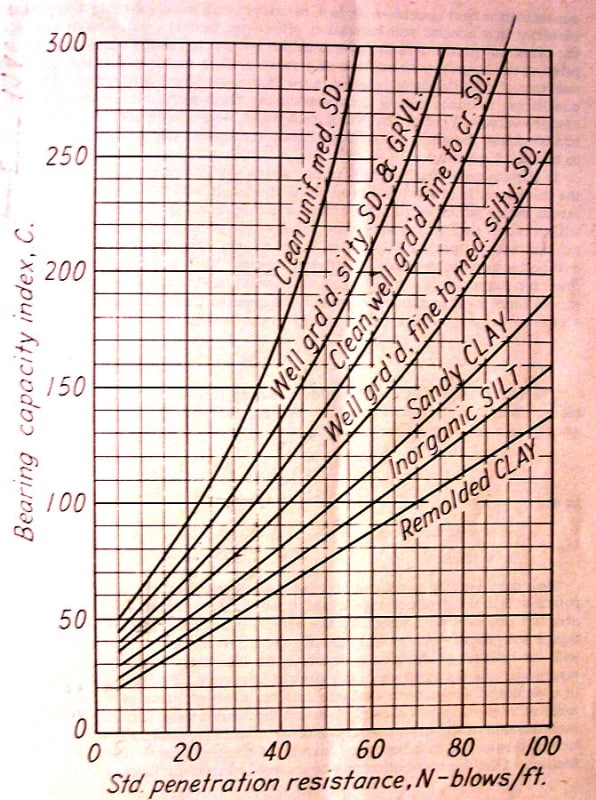Navigation
Install the app
How to install the app on iOS
Follow along with the video below to see how to install our site as a web app on your home screen.
Note: This feature may not be available in some browsers.
More options
-
Congratulations waross on being selected by the Tek-Tips community for having the most helpful posts in the forums last week. Way to Go!
You are using an out of date browser. It may not display this or other websites correctly.
You should upgrade or use an alternative browser.
You should upgrade or use an alternative browser.
Settlement in sand given CPT 1
- Thread starter Civil_TX
- Start date
- Status
- Not open for further replies.
-
1
- #2
If you have a relation between Cone resistance and split spoon blow counts, this chart has been found to be valid for sands above the water table. For sands below the water table it is too conservative. Comes from the text by B.K. Hough, "Basic Soil Engineering". The term Bearing Capacity Index is equal to 1+e/Cc
I should have said, this table assumes settlement at 1".
I'll dig around in my stuff. I think I also haveHough's method for calculating settlement in sands from N values.

I should have said, this table assumes settlement at 1".
I'll dig around in my stuff. I think I also haveHough's method for calculating settlement in sands from N values.

In Hough's first edition text "Basis Soils Engineering", in Chapter 12, he presents a chart relating void ratio to compressive stress, showing several examples of in place void ratio varying with log of compressive stress as straight lines. So what this requires is knowing the void ratio to start. He also has a chart showing N value vs Relative Density and then how to get to void ratio.
I believe his text is for sale on the Internet. Original copyright 1957. Again relate that N value to the cone results.
I believe his text is for sale on the Internet. Original copyright 1957. Again relate that N value to the cone results.
try a search for the N versus cone.
Here is one link that has some scoop.
Here is one link that has some scoop.
- Thread starter
- #5
There are many correlations available to find the Elastic Modulus from the CPT. Once you find the Elastic Modulus of the different soil layers in your soil profile, distribute the applied stress from the spread footing with depth and calculate the settlement of each layer. Just Google it and do a little research and you will find what you are looking for.
- Status
- Not open for further replies.
Similar threads
- Locked
- Question
- Replies
- 5
- Views
- 23
- Locked
- Question
- Replies
- 1
- Views
- 26
- Replies
- 2
- Views
- 25
- Replies
- 10
- Views
- 53
